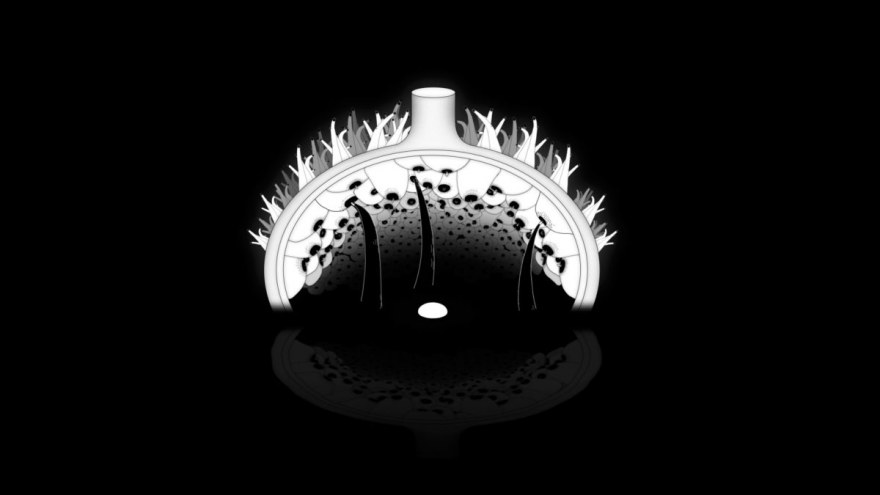Dinner with Egg
Interview with Martina Scarpelli, director of Egg
Egg is interested in the mechanisms of anorexia, its rituals, in the isolation and obsessions it generates. Do you consider that the success of the film can be accounted for, apart from its technical qualities, by the fact that it deals with a difficult subject, which remains mainly unknown to most people?
Probably yes, but mostly the way the subject is addressed. It shows a complex relationship between someone who is afraid of something and that “something”. It describes why is fear so seductive and what it takes to overcome it. It portrays a moment of shame and yet of victory. I was trying to avoid feelings like sorrow and pity, which are easy to evoke when displaying a young girl dealing with anorexia. People think there is nothing attractive in such a disease, or rarely associate it with sexuality, which gives the film an interesting point of view, I guess.
The film does not show a lean body, which creates some distance between the theme of the film and its representation. We are more under the impression that the interiority of the ailing person is appearing before our eyes, or even that we are getting access to his/her unconscious self. Was it the desired effect?
I mean, animation is fiction, it is constructed, and in this case distance helps, I think. It gives the opportunity to create the right distance from reality and give the audience a chance to really understand what is happening to the protagonist of the story. Since the style is so simple, I could play with the body, break it or morph it, and use visuals to create a feeling of discomfort not directly linked to the refusal of food and a too skinny body. I believe that leanness takes way too much attention because the process of how it happens is weird and quite mean, more than the symptom itself. I wanted Egg to be about the uncanny process. So yes. It is a journey within the mind of the character, sure. She is telling us her big secret, and she is aware of being the creator of it.
In the light of this, do you think that Egg could be specifically directed to people wishing to know more about this disease more than to people with anorexia?
I always thought so! But after its release I had to change my mind as I got touching mails from women currently dealing with it. It really hit me. Since that happened, Lana Nikolic from Late Love Production has been developing teaching material, and we had the opportunity to start conversations with psychiatrists in several European countries.
Do you think that the possibilities offered by animation make it the perfect technique to evoke this disease made of anxiety, irrationality and paradox?
I think animation is a paradox. No one thinks it’s reality, but everyone believes it. I think it works perfectly with anything mental. I also think sometimes it doesn’t work at all.
How did you work to create such a feeling of disturbance and uneasiness?
I always wanted the film to be obsessively clean and slightly disgusting J. The film has a nice growing tension: it starts quiet, becomes more tense and aggressive. I knew Egg was going to be uncomfortable, and I like it when animation is creepy or weird. The protagonist is basically partly sick, partly healing: we are constantly in the field where we don´t know how to distinguish bad, good, or pleasure from displeasure, resulting in a sort of anxiety or in that unsettling feeling, that takes over when we lose control.
Would you say that the short film format has given you any particular freedom?
I could work mainly on my own, and with a very small and trusted team, so we could push the style. I also believe that in short films you dare to use a different language, somehow more direct and condensed.
Egg was shown in the National Competition.








